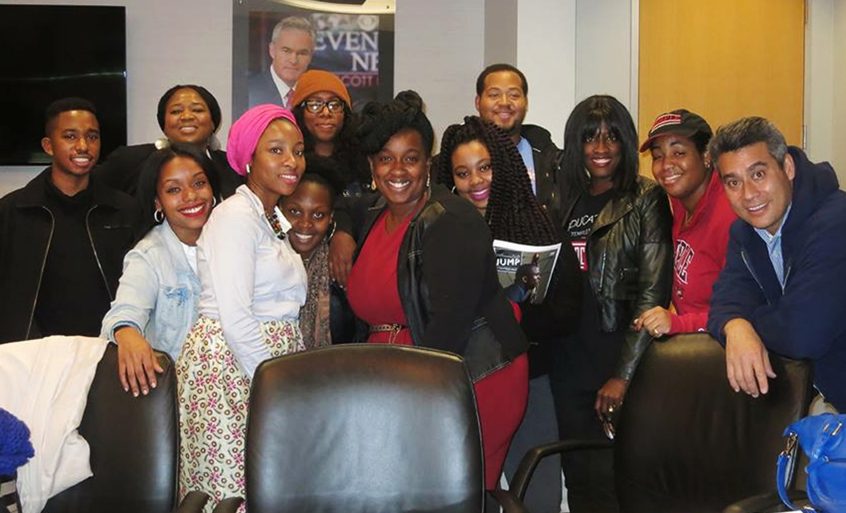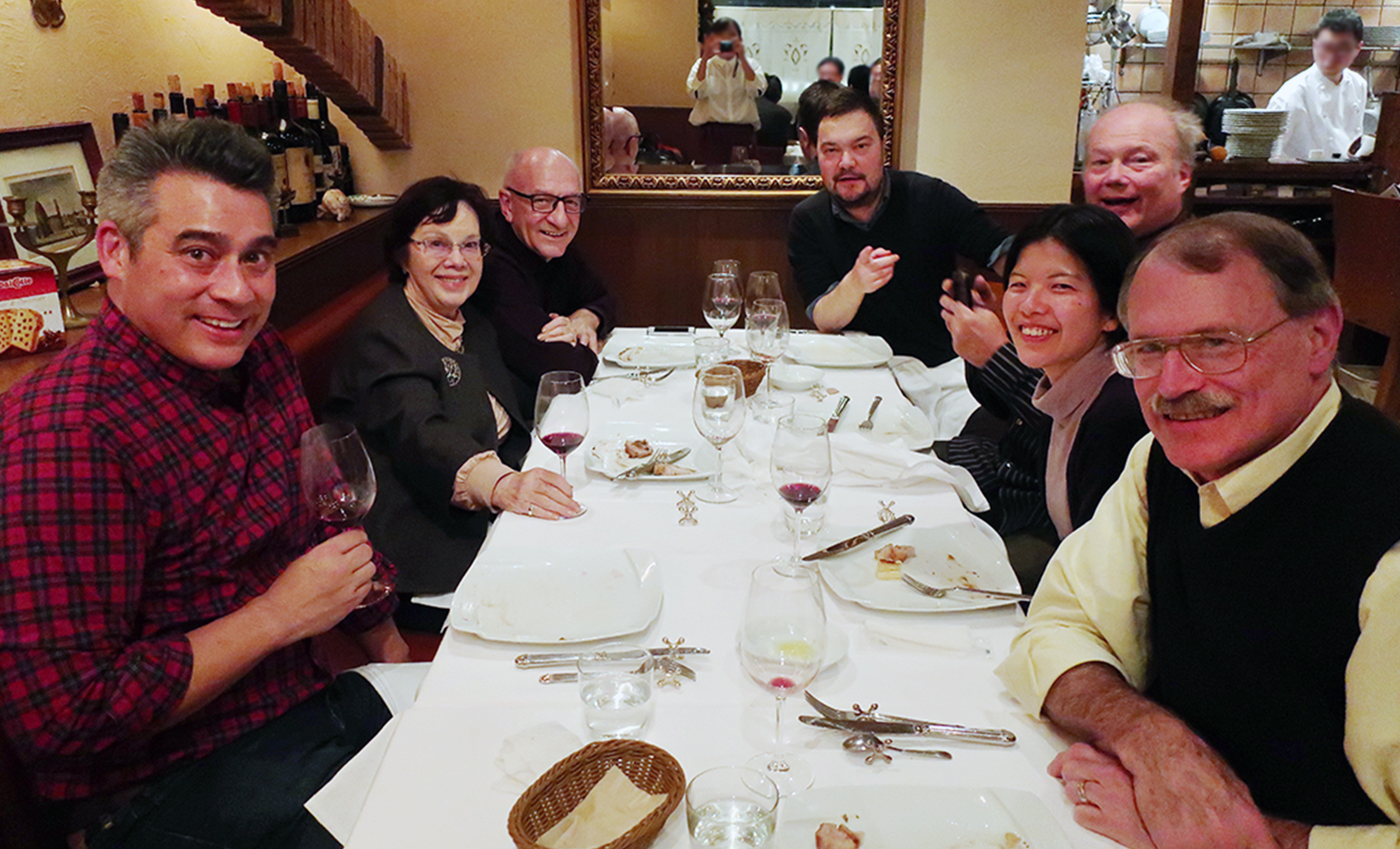In this monthly column, George Miller, TUJ’s Associate Dean for Academic Affairs (ADAA), shares what’s going on at Temple University, Japan Campus (TUJ) and with his new life in Tokyo. For this edition, he writes about the faculty and staff who inspires him to do bigger and better things.
By the time our meal was over, the conversation was flowing. Members of the Asian Studies faculty were chatting casually about life in Japan and about witnessing events in China and beyond.
“Where were you during Tianamen Square?” David Satterwhite asked Ginny Anami, our guest of honor, who was retiring from teaching after a long career at TUJ.
Anami wasn’t in China during the 1989 demonstrations, she responded, but she talked about being there afterwards — the way the people and government reacted to the months of tension that ended in bloodshed.
She spoke with such expertise and detail that I finally asked, “What was your role in China? Why were you there?”
“I was the wife of the ambassador,” she replied.
Her husband, a former Japanese minister, was the Japanese ambassador to China off and on during that era, for a total of around 12 years. In addition to speaking English and Japanese fluently, she speaks Chinese and writes books about China in Japanese. She’s not only married to someone of prominence, Ginny is a leading scholar of East Asian culture and history.
And she’s been teaching as an adjunct, commuting for more than an hour each way, for more than 12 years.
As I looked around the table, I started thinking about the amazing faculty who teach at TUJ. David Satterwhite was the head of the Fulbright Program in Japan. His family founded a hospital in Kyoto in the years after World War II. We were joined by Sachiko Horiguchi, an Oxford trained anthropologist who studies youth mental health issues; Ben Bansal, who studies cities and economies; Tom Boardman, who has been the TUJ librarian for 27 years; and Jeff Kingston, TUJ’s most prolific scholar, who publishes articles, chapters and books at a rate that’s difficult to keep up with.
As the new person in charge of academics at TUJ, it’s been a humbling experience to learn about the expertise that our faculty holds.
I recently tabulated the scholarly and creative output from faculty during 2018: it’s hundreds of articles, dozens of book chapters and numerous books. Our faculty have been invited to speak at institutions around the world, from Belfast to New Zealand, and many places in between. They present their work and represent TUJ at prominent universities, like Princeton, Waseda and The New School.
They are leaders in the art world and leaders in thought, and they bring that knowledge into the classroom.

I was never a traditional scholar. Before going into academia, I was a journalist in Philadelphia. I happened to find the perfect place to teach — at Temple, on Main Campus.
I lectured about the direction of journalism as an industry and as a public service — things I was seeing on a local, national and international level. But since I had such an intimate relationship with the city and region (having grown up there and having spent almost all of my career there), I really focused on the local, making a direct connection to what students were seeing and hearing every day.

When I taught the capstone class for the journalism department, called PhiladelphiaNeighborhoods.com, I was able to take advantage of my resources and network. When students were working on multimedia projects about neighborhoods, I could connect them to community activists, business leaders and politicians with whom I had a relationship. I could provide historical background, including recent history about news events around the city.
For eight years, I published an independent music magazine on the side while working as a professor, and that offered me further expertise in the life of the city.
People often invited me to speak to their organizations about independent media, entrepreneurial journalism, music and Philadelphia. I almost always agreed to speak, as I felt that my job — at Temple, a public university that historically has been the university for the city of Philadelphia — was to be a resource to the greater community.

I haven’t developed that expertise or network here in Tokyo just yet, so I find myself relying on our faculty and staff to teach me — about Tokyo and Japan, as well as about themselves and their work. It’s been fascinating.
I attended art professor Shinya Watanabe’s wedding, during which luminaries from the art world performed. Psychological Studies professor Dariusz Skowronski explained to me the history of sexual activity in Japan, and how the contemporary views are radically different from 200 years ago.
The director of the career development office, Kentaro Sawa, showed me around his neighborhood, which is known as a hub for jazz music. I’ve dined multiple times with the faculty members from our Intellectual Heritage program and we’ve had the most wonderful conversations about the art of learning, pedagogy and the value of knowledge.
A few months ago, Jeff Kingston took me out to dinner with his friend, Robert Whiting, the expert on baseball in Japan. It was a thrill for me, a huge baseball fan who has read all of Robert’s books.
At TUJ, I’m constantly surrounded by people who inspire me to do bigger and better things. Every day is a learning experience. And I’m absorbing everything these folks have to offer.

